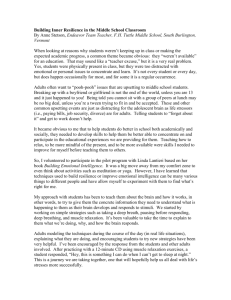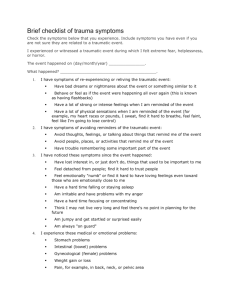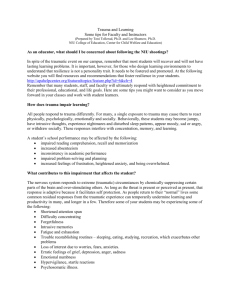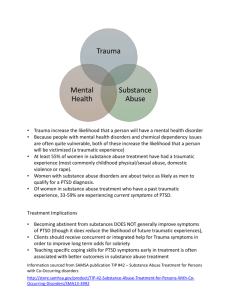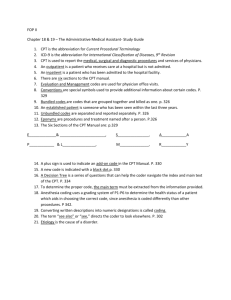Truama-Focused Cogtive Behavioral Threrapy (TF-CBT)
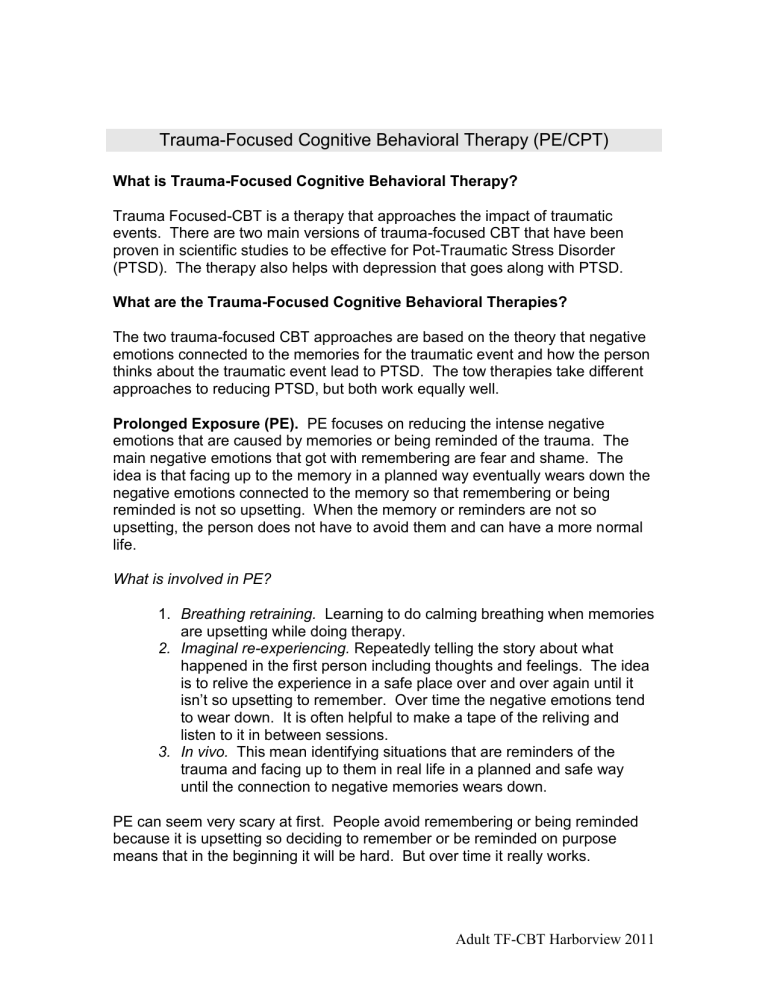
Trauma-Focused Cognitive Behavioral Therapy (PE/CPT)
What is Trauma-Focused Cognitive Behavioral Therapy?
Trauma Focused-CBT is a therapy that approaches the impact of traumatic events. There are two main versions of trauma-focused CBT that have been proven in scientific studies to be effective for Pot-Traumatic Stress Disorder
(PTSD). The therapy also helps with depression that goes along with PTSD.
What are the Trauma-Focused Cognitive Behavioral Therapies?
The two trauma-focused CBT approaches are based on the theory that negative emotions connected to the memories for the traumatic event and how the person thinks about the traumatic event lead to PTSD. The tow therapies take different approaches to reducing PTSD, but both work equally well.
Prolonged Exposure (PE). PE focuses on reducing the intense negative emotions that are caused by memories or being reminded of the trauma. The main negative emotions that got with remembering are fear and shame. The idea is that facing up to the memory in a planned way eventually wears down the negative emotions connected to the memory so that remembering or being reminded is not so upsetting. When the memory or reminders are not so upsetting, the person does not have to avoid them and can have a more normal life.
What is involved in PE?
1. Breathing retraining.
Learning to do calming breathing when memories are upsetting while doing therapy.
2. Imaginal re-experiencing.
Repeatedly telling the story about what happened in the first person including thoughts and feelings. The idea is to relive the experience in a safe place over and over again until it isn’t so upsetting to remember. Over time the negative emotions tend to wear down. It is often helpful to make a tape of the reliving and listen to it in between sessions.
3. In vivo.
This mean identifying situations that are reminders of the trauma and facing up to them in real life in a planned and safe way until the connection to negative memories wears down.
PE can seem very scary at first. People avoid remembering or being reminded because it is upsetting so deciding to remember or be reminded on purpose means that in the beginning it will be hard. But over time it really works.
Adult TF-CBT Harborview 2011
Cognitive Processing Therapy (CPT).
CPT focuses mainly on unrealistic and unhelpful thoughts a person has about the trauma. These thoughts can cause memories or reminders of the trauma to be very upsetting because thoughts can lead to intense negative feelings such as fear or shame. The idea is to identify and change the thoughts in a planned way. When the person thinks in a more realistic and helpful way, remembering or being reminded is not so upsetting and the person can return to a normal life.
What is involved in CPT?
1. The thought-feeling-behavior connection is learned. The person learns now a memory or reminder can lead to unrealistic or unhelpful thoughts which cause negative feelings and then leads to behavior that is unhelpful.
2. The person writes an impact statement about the traumatic event that includes the thoughts and analyzes it to see where the unrealistic or unhelpful thoughts are. These are called “stuck points”.
3. The person comes up with more realistic and helpful replacement thoughts.
4. The person practices in between sessions analyzing situations using the thought-feeling-behavior connection and practices using the new thoughts instead.
CPT can seem hard to do at first. Most often people have a feeling without realizing that there is a thought behind it. Learning to stop and figure out the thought and substitute a more helpful thought takes a big effort. But over time it really works.
Deciding Which Therapy to Choose
The good news is that both therapies work just as well. The decision can be based on what fits for the person or what is worked out with the therapist.
Sometimes the therapy can be a combination of aspects of PE (remembering on purpose) and CPT (identifying and changing unhelpful thoughts.
How Long Does Therapy Take?
Trauma-focused CBT often gets results in a few months. Sometimes the person does not even need a whole course of therapy to be better. Other times, especially for more severe or long lasting traumas or where there is a past history of trauma, it can take longer.
The key is that therapy works because the person is actively trying to change in between therapy sessions. The two main elements of effective trauma-focused therapy are practicing facing up to fears or practicing substituting in new and more helpful thoughts. It is hard work, but it is really worth it. The therapist is there to help you succeed.
Adult TF-CBT Harborview 2011


